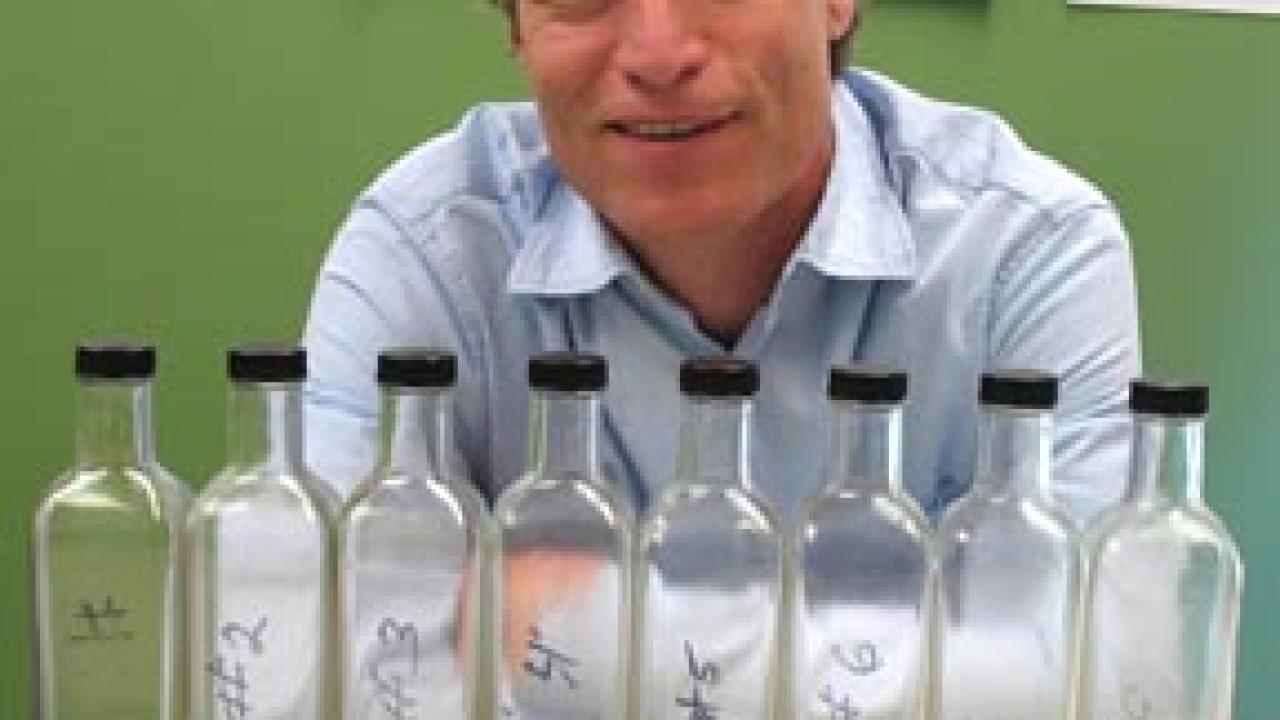At harvest time late last year, campus olive oil manager Dan Flynn estimated UC Davis' crop would be
44 percent larger than the poor showing in 2006, a year when the harvest was down all over the state.
Now that the 2007 crop is milled, or pressed, Flynn knows his estimate was low, very, very low. In fact, the trees produced about 800 gallons of oil, enough for 12,000 bottles -- almost 72 percent more than last year's 7,000 (they sold out in four months).
"All our investment is really paying off," said Flynn, referring to UC Davis' newfound interest in pruning and harvesting its olive trees, and bottling the oil and promoting the heck out of it.
Up until three years ago, the university sprayed its olive trees to keep them from flowering. But countless olives grew anyway -- and then fell to the ground, where foot traffic squished the fruit into a greasy mess.
The Buildings and Grounds division estimated that it spent $60,000 a year on cleanup. And still there were safety and liability problems when bike tires spun out on the oil and riders went tumbling.
Sal Genito, director of Buildings and Grounds, latched onto the proverb, "When life gives you lemons, make lemonade," only he decided to turn olives into oil.
Since then, the university has turned its olive oil expertise into the new UC Davis Olive Center, the first such research facility in North America, with start-up funding of $75,000 from the College of Agricultural and Environmental Sciences, and the Office of Research, and $25,000 from private industry and the California Olive Oil Council.
Olive oil sales are another revenue source, said Flynn, who is the center's executive director.
The key, he said, is blending the oils from all the campus's different olive varieties into products that will continue to sell well and win awards (the first two large-scale bottlings reaped three gold medals, two silvers and a bronze at the Los Angeles County Fair's prestigious international competition).
He succeeds at this by bringing in experts like Paul Vossen, a farm adviser whom Flynn described as UC's "foremost expert on olive oil." So it was last month that Vossen came to campus to help blend the 2007 crop into three oils matching the flavor characteristics of UC Davis' labels: Wolfskill, The Silo and Gunrock.
Flynn said Wolfskill is the most delicate blend, with a lot of ripe olive flavor; The Silo is a medium blend, more pungent and bitter; and Gunrock is the most intense, "with a lot of that Tuscan-style flavor."
Overall, he said, the 2008 quality is "very high, with intense flavor."
Media Resources
Dave Jones, Dateline, 530-752-6556, dljones@ucdavis.edu
